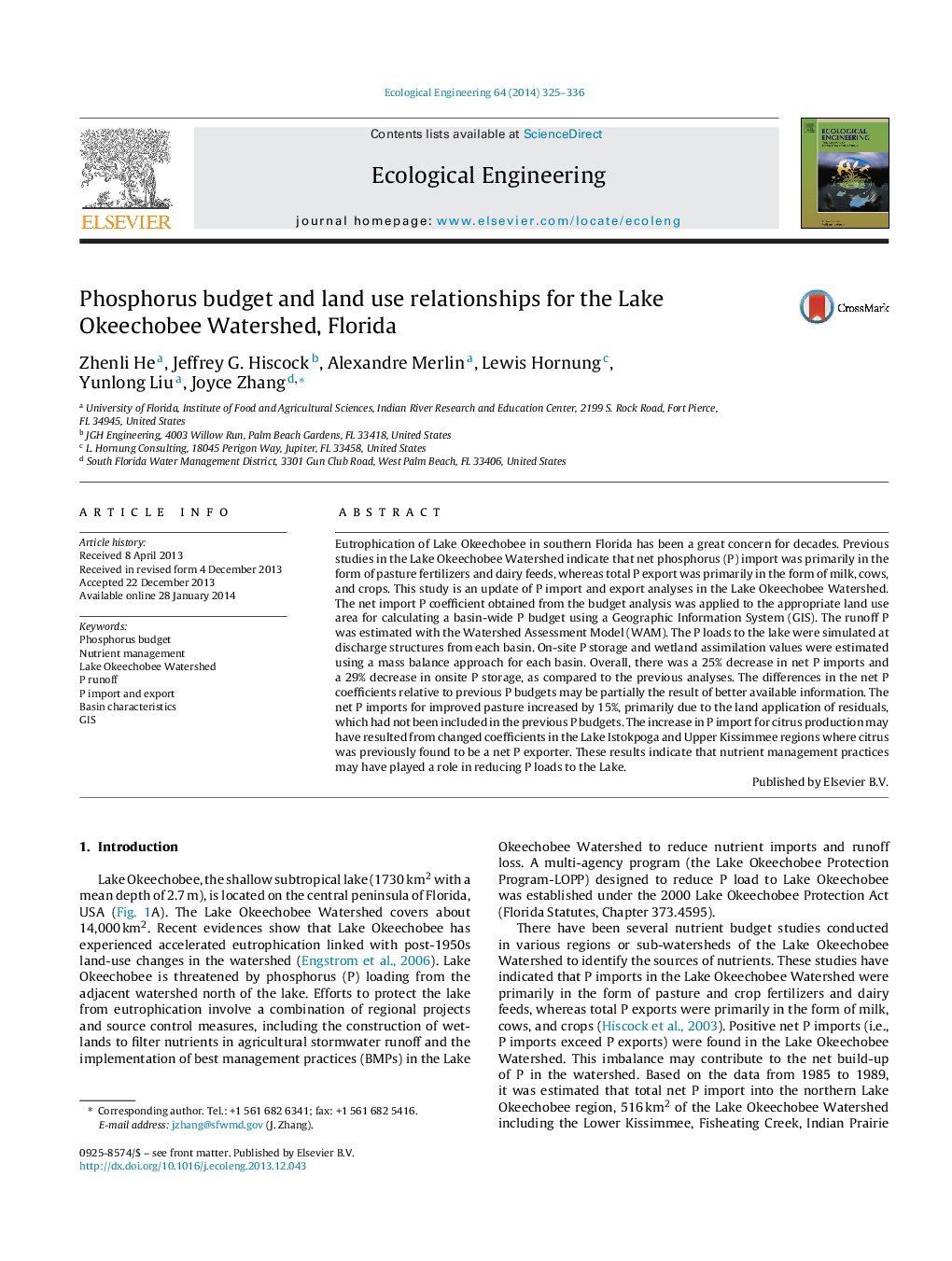| Article ID | Journal | Published Year | Pages | File Type |
|---|---|---|---|---|
| 4389595 | Ecological Engineering | 2014 | 12 Pages |
Eutrophication of Lake Okeechobee in southern Florida has been a great concern for decades. Previous studies in the Lake Okeechobee Watershed indicate that net phosphorus (P) import was primarily in the form of pasture fertilizers and dairy feeds, whereas total P export was primarily in the form of milk, cows, and crops. This study is an update of P import and export analyses in the Lake Okeechobee Watershed. The net import P coefficient obtained from the budget analysis was applied to the appropriate land use area for calculating a basin-wide P budget using a Geographic Information System (GIS). The runoff P was estimated with the Watershed Assessment Model (WAM). The P loads to the lake were simulated at discharge structures from each basin. On-site P storage and wetland assimilation values were estimated using a mass balance approach for each basin. Overall, there was a 25% decrease in net P imports and a 29% decrease in onsite P storage, as compared to the previous analyses. The differences in the net P coefficients relative to previous P budgets may be partially the result of better available information. The net P imports for improved pasture increased by 15%, primarily due to the land application of residuals, which had not been included in the previous P budgets. The increase in P import for citrus production may have resulted from changed coefficients in the Lake Istokpoga and Upper Kissimmee regions where citrus was previously found to be a net P exporter. These results indicate that nutrient management practices may have played a role in reducing P loads to the Lake.
